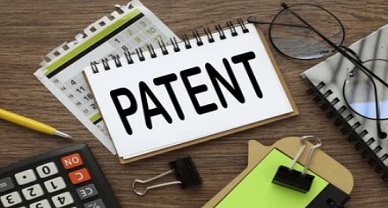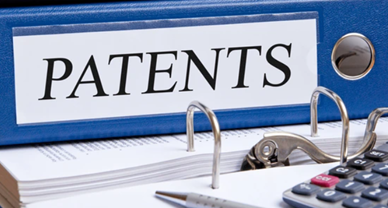Analysing the Draft CRI Guidelines, 2025: Navigating the Evolving Landscape of Computer-Related Inventions
The high velocity of technological developments in Information and Communication Technology and Computer Science has brought tremendous changes in the evaluation and patenting of inventions in the tech industry. With innovations in Artificial Intelligence, blockchain technology, quantum computing, cloud computing, the Internet of Things, and cyber security, the legal environment of Computer-Related Inventions (CRIs) has become more complicated.
To counteract these developments, the Controller General of Patents, Designs, and Trademarks Office (CGPDTM) has updated the CRI Guidelines, originally published in 2017. The new draft of the CRI Guidelines, published in 2025, is designed to make India’s patent regime keep in line with these developing technologies. This blog discusses the key aspects of the draft guidelines, their implications for the patentability of CRIs, and their wider implications for the tech sector and intellectual property law.
Background of CRI Patents
A Computer-Related Invention (CRI) is an invention that uses computers, computer programs, or computer systems to solve a particular technical problem. CRIs have become the centre of attention in patent law since they usually lie on the line between conventional patentable inventions (which are usually hardware-oriented and physical devices) and unpatentable abstract ideas or mathematical algorithms.
In the past few years, there has been a growing need to delineate the patentability of computer programs and other ICT inventions, which has brought about the drafting of guidelines spelling out the law governing the examination of such inventions. The updated CRI Guidelines capture the new developments in technology, as well as new jurisprudence, both from Indian courts and international jurisdictions.
Key Features of the Draft CRI Guidelines, 2025
The 2025 draft CRI Guidelines offer a number of important updates designed to bring patent law in line with the developments in AI, blockchain, IoT, and other disruptive technologies. Some of the important features of the guidelines are:
- Revised Definitions of Key Terms
The updated guidelines provide new definitions for ‘algorithm’, ‘firmware’, ‘secure system’, and ‘per se’ that reflect the latest court decisions that have impacted the meaning of these terms. In view of the Microsoft and Blackberry patent cases that have offered valuable legal guidance regarding how some terms and concepts need to be construed in the context of CRIs.
For instance, the definition of ‘algorithm’ has been broadened to make clear its application in software inventions, especially where it is involved in machine learning, AI, and other forms of computation. This revision provides for consistency and clarity in interpreting these important terms, particularly when they are pivotal in patent claims in the technology sector.
- Legal Provisions and Recent Jurisprudence
The draft guidelines also contain a detailed section on legal provisions and recent jurisprudence pertaining to CRIs. This section has a detailed overview of notable judgments from 2019 to 2024, keeping in pace with the dynamic nature of patent law and providing insight on how the courts have dealt with CRI-related cases. Some of the important decisions that are included are those dealing with AI and machine learning, where courts have struggled to decide whether algorithms or inventions based on software are eligible for patent protection.
Incorporation of recent jurisprudence makes it certain that patent examiners are well-informed about the current trends in the law and have a better idea of applying the guidelines based on recent court rulings.
- The 7-Step Approach for Novelty Determination
One of the most important additions to the guidelines is the inclusion of the 7-step method for determining novelty, as established by the Delhi High Court in the 2024 Ericsson v Lava case. This method offers a more formal and systematic approach to deciding whether an invention is novel, particularly in computer-related inventions.
The 7-step method is designed to place the technical aspects of an invention for evaluation, rather than just looking at its abstract nature. It is essential that this method helps prevent software and ICT-related inventions with actual technical contributions from being rejected just because they deal in abstract ideas such as algorithms.
- Disclosure Requirements for Disruptive Technologies
Considering the speedy developments in AI, blockchain, machine learning, and IoT and other disruptive technologies, the draft guidelines stress that these inventions’ detailed disclosure in their patent applications cannot be overlooked. The guidelines also mandate patent specifications for inventions here to state specifically the implementation aspects, including:
- Training sources for AI models
- Data pre-processing steps
- Learning models and used loss functions which have been utilized
This disclosure requirement is in addition to ensure that the inventions patented are transparent and reproducible in full, making it easier for patent examiners to determine the technical contribution of such inventions.
- Business Method Test
The draft guidelines also include a mention of the Opentv Inc. vs. The Controller of Patents and Designs case, in which a three-factor test was proposed to identify what is a business method. Under this test, a business method would not be patentable unless it has a technical contribution or technical effect. This provision is highly apt in view of the growing utilization of blockchain and AI in corporate operations. According to the guidelines, business approaches involving technological breakthroughs like blockchain-based monetary systems or AI-based supply chain systems may be entitled to patent protection.
- Technical Contribution and Technical Effect
The proposed guidelines also offer a non-exhaustive definition of what amounts to a technical contribution or technical effect, together with certain examples of what could be patentable or non-patentable in the context of CRIs. This list serves to elucidate the nature of inventions which qualify for protection under the patent, as well as offering guidelines on what would amount to an abstract idea or non-technical invention.

For example, a technique to enhance data processing speeds through an innovative algorithm might qualify as a technical contribution, while a business rule or formula would not qualify for patentability. This makes it important to distinguish between a technical contribution and a mere formula or mathematical expression for patent examiners and applicants alike, to ensure that patent protection is reserved only for inventions with a real technical effect.
Implications of the Draft CRI Guidelines, 2025
The updated regulations have tremendous meaning for both applicants for patent protections and the overall tech world. For Innovators and Patent Applicants The presence of clear disclosure requirements and the 7-step novelty determination process will assist patent applicants in better preparing their applications to meet the legal requirements. Emphasis on technical contributions and replicability in AI and blockchain patents will tend to encourage more rigorous and clear patent filings.
For Patent Examiners The revised definitions and mention of recent jurisprudence will help patent examiners to apply the guidelines uniformly and take well-informed decisions regarding patentability. The focus on the technical contribution requirement helps patent examiners to assess the practical relevance of CRIs, instead of rejecting inventions relating to abstract concepts.
For the Tech Industry The new guidelines are in line with the growing complexity of patent law in the technology realm and the enhancing role of intellectual property in the ICT sector. The guidelines will bring clarity regarding how revolutionary technologies such as AI, blockchain, and quantum computing will be dealt with in the patent system so that companies will be able to navigate the patenting process more confidently.
The CRI Guidelines, 2025 draft, are a major step towards harmonizing India’s patent regime with the fast-changing technological environment. Through more precise definitions, the inclusion of recent case law, and the addition of new disclosure requirements for disruptive technologies, the guidelines ensure that patents in the area of computer-related inventions are awarded to genuinely innovative and technically meritorious inventions.
Author:– Ishika Keswani, in case of any queries please contact/write back to us at support@ipandlegalfilings.com or IP & Legal Filing.
References
- https://ipindia.gov.in/newsdetail.htm?1067
- https://www.barandbench.com/law-firms/view-point/revised-cri-guidelines-2025
- https://mailchi.mp/remfry/india-draft-cri-guidelines-2025
- https://bananaip.com/cri-patent-guidelines-2025-ai-algorithms/


